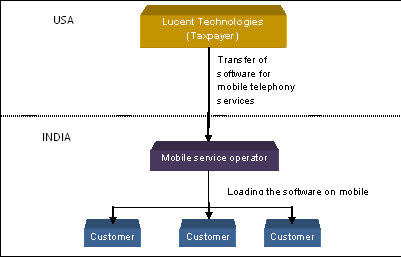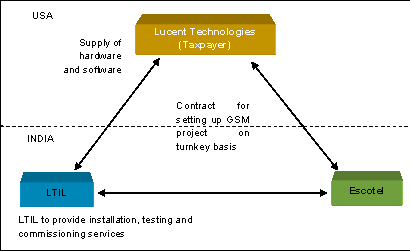Research and Articles
Hotline
- Capital Markets Hotline
- Companies Act Series
- Climate Change Related Legal Issues
- Competition Law Hotline
- Corpsec Hotline
- Court Corner
- Cross Examination
- Deal Destination
- Debt Funding in India Series
- Dispute Resolution Hotline
- Education Sector Hotline
- FEMA Hotline
- Financial Service Update
- Food & Beverages Hotline
- Funds Hotline
- Gaming Law Wrap
- GIFT City Express
- Green Hotline
- HR Law Hotline
- iCe Hotline
- Insolvency and Bankruptcy Hotline
- International Trade Hotlines
- Investment Funds: Monthly Digest
- IP Hotline
- IP Lab
- Legal Update
- Lit Corner
- M&A Disputes Series
- M&A Hotline
- M&A Interactive
- Media Hotline
- New Publication
- Other Hotline
- Pharma & Healthcare Update
- Press Release
- Private Client Wrap
- Private Debt Hotline
- Private Equity Corner
- Real Estate Update
- Realty Check
- Regulatory Digest
- Regulatory Hotline
- Renewable Corner
- SEZ Hotline
- Social Sector Hotline
- Tax Hotline
- Technology & Tax Series
- Technology Law Analysis
- Telecom Hotline
- The Startups Series
- White Collar and Investigations Practice
- Yes, Governance Matters.
- Japan Desk ジャパンデスク
Tax Hotline
March 19, 2009Lucent Technologies: License of software held to be business income
The taxation of software payments has always been shrouded in controversies. With software companies pushing for software payments to be characterised as business payments and the tax authorities pitching for its characterization as royalty, the question remains unsettled to date. The judiciary has time and again been posed with the question of characterization of software income. Pertinently the judiciary has often made the effort to look beyond the general principles of income characterization and understand the nuances involved in the taxation of software transactions. Very interestingly, the lower judiciary has had umpteen number of chances to look into the question, however, the higher echelons of the judiciary, that is the High Courts and the Supreme Court, have not had a chance to adjudicate upon this issue. And thus, the ambiguity continues to prevail.
The Delhi and the Bangalore benches of the Income Tax Appellate Tribunal (“Tribunal”) have adjudicated on this issue in a plethora of cases such as the Motorola Inc. Erisson Radio Systems A.B. and Nokia Networks OY v. Dy. CIT1, Sonata Information Technology Ltd. v. ACIT2, Lucent Technologies Hindustan Limited v. ITO3 and Infrasoft Limited (India Branch) v. Asst. Director of Income Tax4 to name a few. The Judiciary has often appreciated the fine line of distinction between a copyright and the copyrighted article and the consequences of such distinction on to the characterization of income.
Recently, the Delhi bench of the Tribunal adjudicated upon Lucent Technologies International Inc. v. Deputy Commissioner of Income Tax5 where the essential question for adjudication was whether payment received by Lucent Technologies International Inc. (the “Taxpayer”) under the license agreement allowing the use of computer software by the Indian operators was in the nature of royalty, as alleged by the tax authorities, or business profits, as claimed by the Taxpayer.

The Taxpayer entered into an agreement with the Indian operators for the supply of certain hardware and software whereby the Taxpayer granted non-transferable and non-exclusive license to the Indian operator for use of software applications for operating the hardware supplied. The software given by the Taxpayer was loaded by the Indian operators onto the handsets of the customers, who would use the software to access the GSM facilities. The tax authorities alleged that with every access of the GSM, the customers would be using the software loaded onto their handsets. In this context, the tax authorities concluded that the transaction involved the sub-licensing of the software by the Indian operators; therefore, involved a transfer of the rights associated with the copyright of the software by the Taxpayer to the Indian operators. Consequently, the tax authorities alleged that the payments made under the agreement be characterised as royalty, and be brought to tax in India.
The Tribunal placed heavy reliance on the ruling in the case of Motorola Inc. and held that the transaction in essence involved merely the transfer of a copy of the software. The Indian operators did not license the software to the Indian customers and therefore, the transaction was an outright sale of the software product. Further, the Tribunal drew a tabular comparison with Motorola Inc. whereby the Special Bench had observed that ‘it is common knowledge that a person may purchase any brand of handset from the market and still have access to mobile telephony of a different company and therefore the Department’s contention that part of the software is loaded onto handset of the subscriber is incorrect'. The Special Bench in that case had also noted that the right received by the customer did not result in acquisition of any rights in the form of a ‘copyright’ as defined in the Copyright Act, 1957. Consequently, based on a direct application of the reasoning adopted by the Special Bench in Motorola Inc., the Tribunal held that the payments were rightly claimed to be business profits and not royalty income as alleged by the tax authorities.

Additionally, the Tribunal also adjudicated upon the question whether the Taxpayer had a Permanent Establishment (‘PE’) in India. The tax authorities based their argument on the terms and conditions of the contract entered into between the Taxpayer, Lucent Technologies India Limited (“LTIL”), a wholly owned subsidiary of the Taxpayer and Escotel Ltd. This contract was for setting up of the GSM project on a turnkey basis in India, wherein the Taxpayer was responsible to provide the hardware and software for the project and LITL providing installation, testing, commissioning services with respect to the same. For the purposes of providing such services, the Taxpayer made available some personnel, who were employees of its affiliates, to LITL for remuneration. The tax authorities alleged that such provision of services through the personnel would constitute a service PE of the Taxpayer in India. The Taxpayer argued that the personnel sent were not its employees, but were rather the employees of its affiliates and therefore, the Taxpayer could not be said to have a PE in India. However, the tax authorities made a reference to the language of Article 5(2)(l) of the India-US Tax Treaty which uses that expression “employees and other personnel” and therefore includes in its ambit own employees and also employees of its affiliates. The Tribunal interpreted the term “other personnel” to mean personnel over which the Taxpayer exercises control with respect to their services. In light of the foregoing interpretation and the facts of the case, the Tribunal held that the Taxpayer had a service PE in India.
CONCLUSIONThe above decision is important as the Tribunal held that the Taxpayer and LTIL had entered into a consortium of partnership. While this aspect has not been dealt with in detail in this ruling, such an interpretation could lead to significantly adverse tax consequences in case of such turnkey projects since the foreign entity and the Indian entity could be treated as an ‘association of persons’ in India and taxed accordingly6.
With respect to software taxation, we see a definite coherence in the reasoning adopted by the judiciary with respect to characterization of software payments. However, the controversy shall continue to haunt all until the question is settled by one of the High Courts or the Supreme Court.
- Neha Sinha & Parul Jain
__________________________
1. (2005)96TTJ(Delhi)1
2. [2006]103 ITD 324(Bang)
3. [2006]286ITR133(Bang)
4. 2009-TIOL-21-ITAT-DEL
5. 2009-TIOL-161-ITAT-DEL
6. Please refer to our hotline dated August 19,2008 for more details on taxation of an Association of Persons

